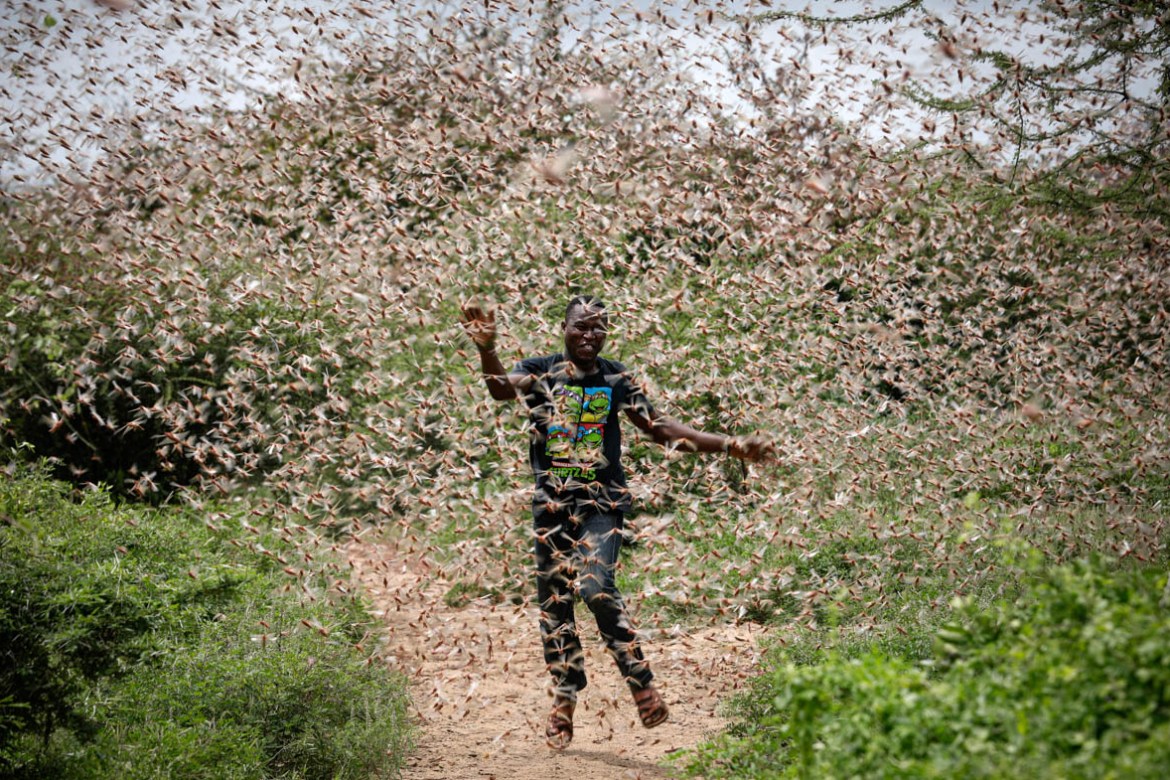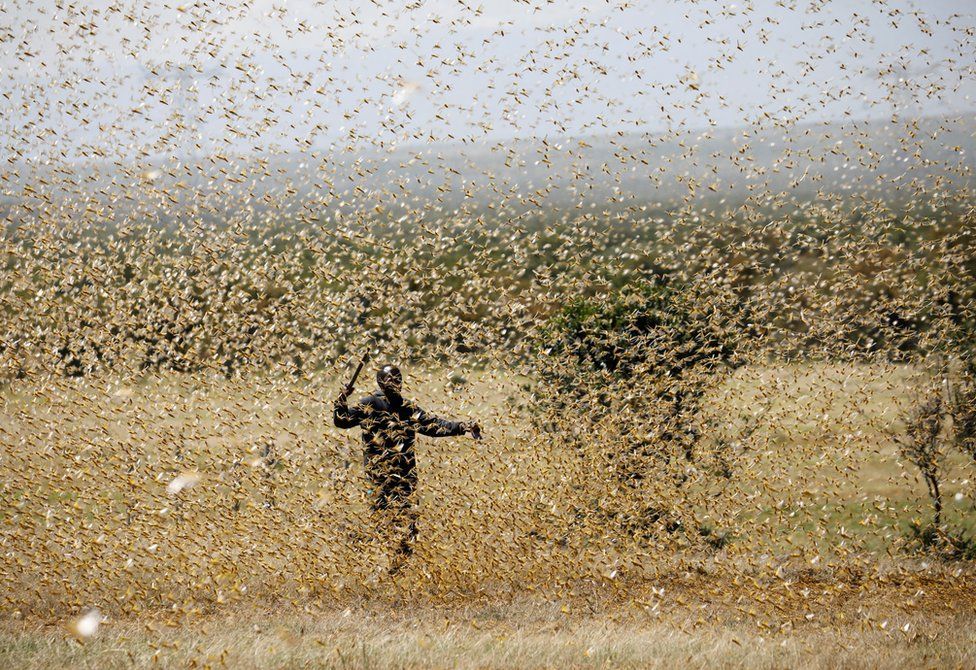Interesting Facts of Locust

Locusts, members of the grasshopper family, are fascinating insects known for their swarming behavior and devastating effects on agriculture. Here are some interesting facts about locusts:

Size and Appearance:

- Locusts can grow to be 1-2 inches in length, with larger species up to 3 inches.
- They have elongated bodies with prominent wings, capable of covering long distances in swarms.
- The coloration of locusts varies depending on the species, but common shades include brown, yellow, and green.
Swarming Behavior:
- Locusts form massive swarms, consisting of millions of individuals.
- Swarms can travel hundreds of miles a day and cover an area of hundreds of square kilometers.
- The swarming behavior is triggered by overcrowding, lack of food, and certain environmental conditions.
Feeding Habits:
- Locusts are voracious feeders,consuming vast amounts of vegetation.
- They use specialized mouthparts to chew and grind plant material.
- Some locust species have a particular fondness for cereal crops, such as wheat, corn, and rice.
Reproductive Capacity:
- Female locusts can lay hundreds of eggs in their lifetime.
- Eggs are buried in the soil, where they hatch into nymphs that eventually develop into adult locusts.
- Multiple generations of locusts can occur within a year, leading to population explosions.
Economic Impact:
- Locust swarms can cause widespread devastation to agriculture, leading to crop failures and famines.
- They consume large quantities of crops, leaving farmers with significant losses.
- The economic impact of locust outbreaks can be devastating for vulnerable communities.
Control Measures:
- Various methods are used to control locust infestations, including chemical pesticides, biological agents, and habitat modification.
- Early detection and monitoring systems are crucial for effective control.
- International cooperation is essential in combating locust outbreaks that cross borders.
Facts of Locust
Locusts are the most catastrophic insect in the world. They cause colossal damage to the crops and cause famine.
Locusts eat foods like leaves, foliages, grasses fruits, vegetables, grains, crops. Sometimes it even eats clothes.
If they can’t find food then sometimes it will eat one other.
Locust has three stages egg, hopper, and adult. Usually, it lay eggs in an egg pod mostly in wet soil.
It can lay eggs three times in their lifetime
The locust usually has a lifespan of around four months. Solitary grasshopper females have a lifespan of around 10 months.
It can reach a length upto 3 inches.
They eat their own weight of food every day.
Locust Swarm
It can stay in the air for even 17 hours.
Locust flies at a speed of about 16-19 km/hr
It travels around 150 kilometers or even more. It usually flies during the day time.
The locusts swarms are usually a desert locusts. They are a kind of grasshopper.
Grasshoppers cannot fly like the locusts although it has wings.
It can attack all parts of countries from Africa to India or even to Australia.
It has the ability to attack 20% of the world’s land.
Desert locust is scientifically called as Schistocerca gregaria
During the solitary stage, there are only a few thousand of locusts in an area of a square mile. But during the swarm formation, there may be about 150 million in a square mile.
1 sq km swarm contains about 40 million locusts.
It can fly upwards of about 1500 meters.
A typical swarm contains about 5 billion locusts which cover an area of about 60 square miles.
The usually carried away by winds. They don’t have pre-determined destinations. They travel to the direction of a place where the wind blows.
In some places, locusts are being eaten by humans. They capture them with nests or basket and cook them with boiling water. Locust is a good source of protein.
They are usually found in asia and africa.
It does not harm people or animals.
The Ancient Egyptians carved locusts on tombs in the period 2470 to 2220 BC
